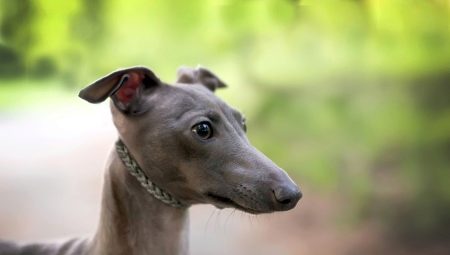Italian greyhounds are miniature greyhounds who have received refinement of addition and good running speed from their ancestors. A modern description of this breed of dogs allows you to get an idea of its exterior and character. But only their owners can appreciate Italian greyhounds. These temperamental animals require a lot of attention and willingly give their love, becoming wonderful companions for walks and companions. Their refined appearance emphasizes aristocratic origin, but what is really hidden behind the beauty and grace of a small dog?

Breed history
The exquisite appearance and become Italian greyhounds - Italian Greyhounds (or, as they prefer to be called in the international arena - piccolo livriero italiano) comes from the compact dogs of Ancient Egypt. It is to that era that the first known images of animals with a fragile physique and elegant head are attributed. The first owners of these dogs were pharaohs. - it is not surprising that the craving for palace luxury in Italian Greyhounds is in the blood.

Gradually, fashion on miniature greyhounds spread to the European continent.
Greeks were among the first fans of Italian greyhounds outside of Ancient Egypt., and then representatives of the ancient Roman nobility took up their selection. In the drawings found in Pompeii, the silhouette of the Italian greyhound is also quite recognizable. Although her ancestors of that time still had some differences with the modern breed standard.
The real peak of the popularity of miniature Greyhounds came in the Renaissance. Among the European nobility, there was a tacit competition for the possession of the most beautiful and exquisite dogs. They were portrayed in the portraits of kings, kept whole packs, and even taken to hunt small game, rabbits. Representatives of the Italian Medici dynasty did make Italian greyhound their constant companions. And the Prussian king Frederick the Great glorified the loyalty of his pet, who did not give a voice at a time when its owner was in danger of exposure by enemies.
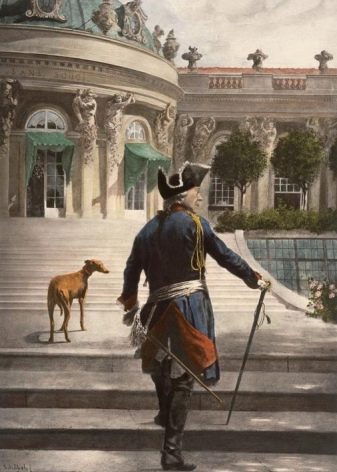
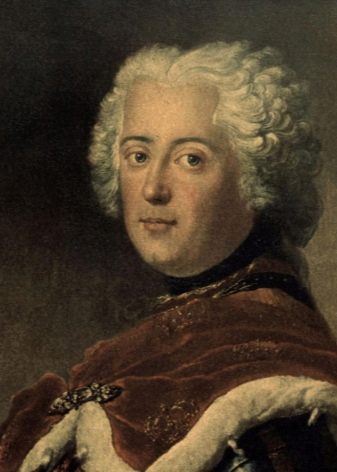
To portray the Italian Greyhound on their canvases was considered an honor for such great painters as Dürer, Titian, Van Dyck. But the fashion for Italian greyhound, no matter how long it was, turned out to be a transitory phenomenon. By the beginning of the XIX century, the demand for the breed fell sharply. The breeders, in an attempt to regain their former popularity, began to consciously reduce the proportions of the already small breed.

Distortion led to the formation of the type of appearance that is now considered obsolete.
Disproportionate addition with a strongly arched back, an apple-head, excessively dry and thin limbs, obtained as a result of this “selection” was accompanied by mental disorders in dogs. Animals were too nervous excitable, prone to hysterical behavior. Similar breeding experiments continued until 1873, when the English Club of Dog Breeding adopted the official standard. A miniature version of Italian greyhounds was recognized as old-type, considered stronger animals with proportional physique as the norm.

The 20th century did not bring the Greyhounds a special increase in popularity. But by the 30s, breeders seriously took up the revival of the former glory of miniature Italian greyhounds. In modern Italian greyhounds you can find the blood of dwarf pinchers and whippets. In Russia, the breed was known even during the time of Peter I. But in the Soviet years, its demand, as well as other decorative breeds, was quite low.
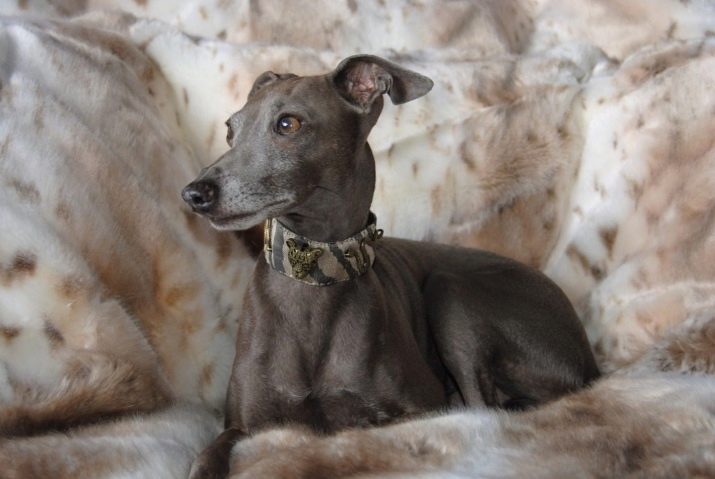
A new round of popularity came in 70 years, when a new population was imported from Italy. Since then, the breeding of Italian greyhounds has been quite active.
Description
Italian greyhound is a typical greyhound, but in miniature. These dogs throughout their lives retain playfulness, good disposition, and are not prone to obesity. A distinctive feature of mini-greyhounds is a small tremor, manifested during hypothermia or extreme nervous excitement of the animal. Dwarf Italian greyhounds live up to 13-14 years old, they feel best when paired with a companion of the same breed - this eliminates the need for the owner to constantly be in close contact with the pet.
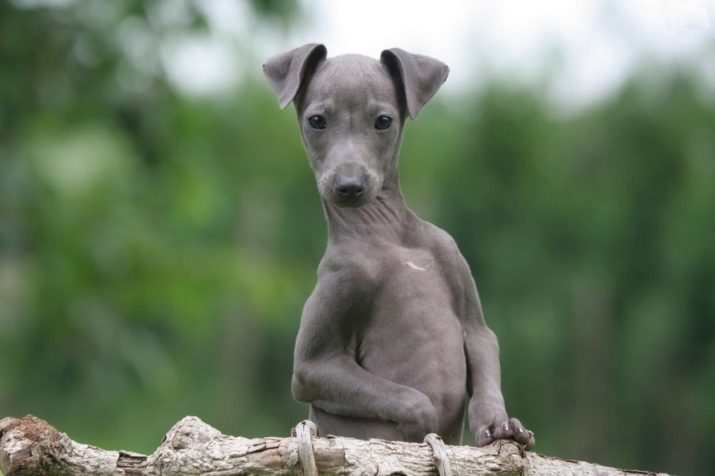
Wool and color
The breed standard implies rather strict restrictions on the shade of the animal's coat. Black, gray, isabella (beige yellow) tone is allowed, white color can be present only on the paws and chest. Variations on the theme of primary colors are also possible. Gray in puppyhood can produce pepper in blue (officially there is no such name), black in bronze, with chocolate tint on its sides.

The final version is acquired only by 1-2 years of the dog, the first puppy molting occurs before the age of 4 months.
FCI and RKF accept only canonical color versions. But national organizations from Canada, England, the USA and some Asian countries allow a wider marking, dividing all shades of wool into the following subspecies:
- solid (or plain), without white markers, only the tiger color scheme is impossible;
- irish - pronounced white collar and colored body;
- wild irish - in addition to the classic Irish markings, there are white spots on the legs, body;
- pied - colored spots on a monochrome snow-white background, the head is often brightly colored;
- ticking - mottled line, its signs appear with age;
- split face - only half of the face is painted in the main tone.
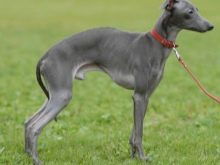
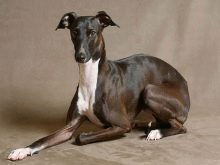
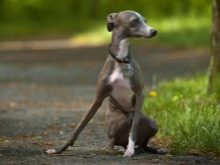
It is important to consider that the breed exhibits manifestations of albinism. In this case, the dog will be deprived of hair pigmentation. It is impossible to obtain a pure white color in any other way - spotting will always be present. The breed is prone to alopecia with weakening shades of hair. Initially, the outer hair is not coarse, very short, located evenly in density, without undercoat.
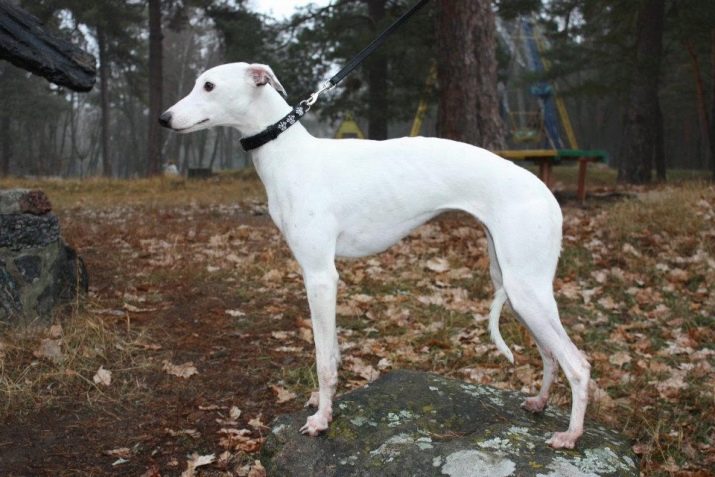
Appearance and physique
Officially accepted breed standard describes her representatives:
- body weight not more than 5 kg, height at the withers from 32 to 38 cm;
- square-shaped body, dry, with a straight back, with a slight bend in the lumbar region, croup wide, chest narrow, deep, reaches the elbows of the dog;
- the neck is typical of Greyhounds - muscular, conical in shape, with a pronounced bend, the transition to the withers is sharply defined, a slight bend of the neck is traced near the throat, without sagging skin, wrinkling, all lines are clearly defined;
- head with characteristic pointedness of the muzzle, narrow and flat, brow arches pronounced, feet and occipital part smoothed;
- the jaw apparatus is elongated, the teeth are strong, white, closed in a scissor bite;
- the nose is well defined, with a brightly colored dark lobe (black pigmentation is preferred, brown with isabella color);
- eyes of a dark brown shade, with bright black eyelids, have a rounded shape, landing of medium depth, without excessive bulge;
- the auricles are miniature, on a thin cartilage, the tips are tilted back, in an excited state the dog sets the base vertically;
- limbs are dry, upright, with moderately developed musculature, eversion is not characteristic of elbows, hind legs are more elegant than forelegs, elongated hips, paws are oval, compact, with small pads;
- tail low set, long and thin, curved at the tip, uniform coat.
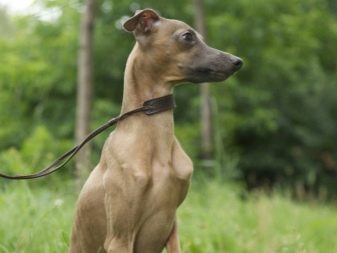
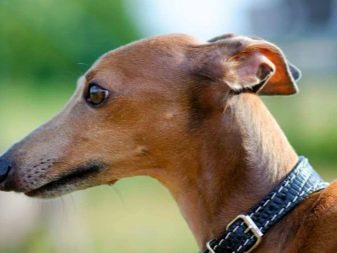
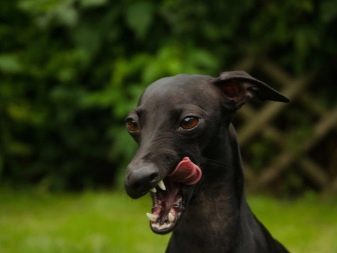
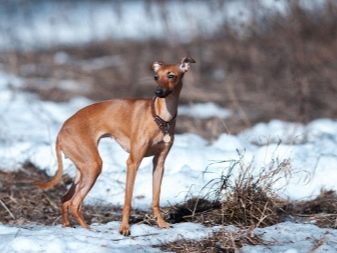
In Italian Greyhounds, defects and malformations such as depigmented lobe and eyelid, pronounced nose bridge, malocclusion are not allowed. Inadmissible is a high set of tail - above the back, as well as its insufficient length, shorter than the hock. Gigantism and dwarfism in Italian Greyhounds are carefully rejected. Excluded the preservation of dewclaws, the presence of an eyesore.
Dogs with severe cowardice or aggression in behavior are considered tribal marriage.
Advantages and disadvantages
Like any other breed, Italian greyhounds can find their advantages and disadvantages. Decorative mini-greyhound has a valuable set of positive qualities.
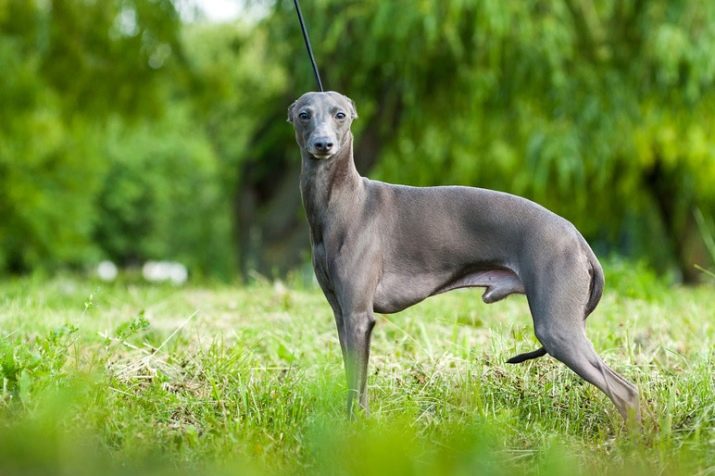
- Sociability. Even taking a teenager, you can get a loving pet. Dogs of Italian greyhound breed get along well with other pets, but do not like dogs that are too large.
- Convenience in content. The beauty salon, in which the love of luxury has been cultivated for centuries, will support the owner in the desire to lie on the couch and will be happy with active games for a walk.
- Good character. In the absence of malformations, the owner receives an exclusively affectionate pet, always in a good mood.
- Willingness to follow fashion. Short hair makes Italian Greyhounds hostage to warm blankets and overalls in the winter. But many owners like the opportunity to dress up a pet. And a properly equipped dog feels very comfortable on a walk.
- The presence of decorative and working lines. You can choose both an exclusively sofa dog, and a serious athlete aimed at winning short and long distance races.
- The minimum difficulties with leaving. Shedding is almost imperceptible, the dogs are neat, the coat does not smell. Easily accustomed to the toilet.
- Compact sizes are convenient for living in an apartment. The dog does not need suburban spaces or an aviary.
- Longevity. With good care and good genetics, Italian Greyhounds easily celebrate their seventeenth birthday.
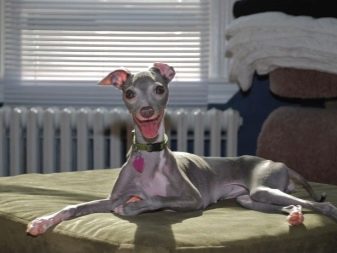
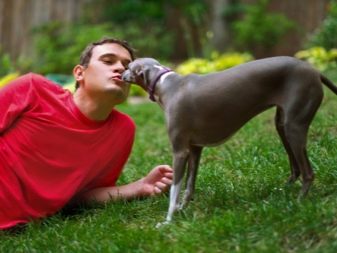
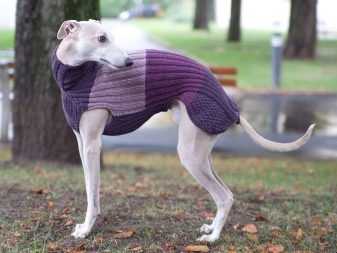

There are also disadvantages. In a very cold climate, an active and cheerful Italian greyhound can turn into a completely domestic dog. There are a number of health problems - puppies have fragile bones, an unsuccessful jump can lead to a fracture. The grace of physique makes animals unsuitable for rough, unceremonious treatment. If there are small children in the house, they will have to be taught how to interact with the pet.
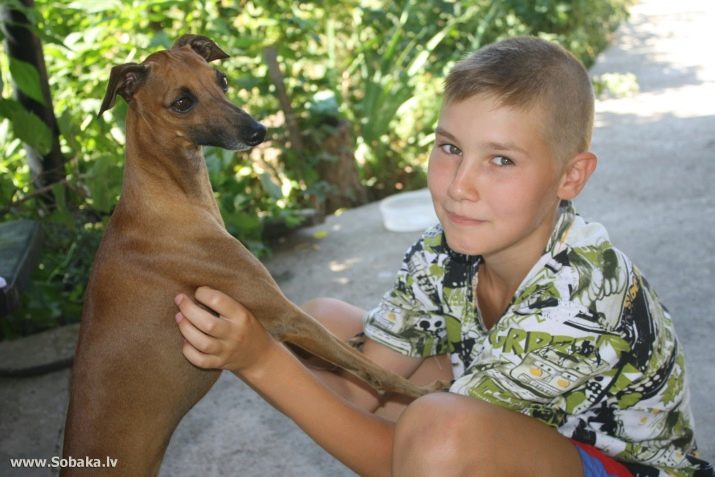
Among the disadvantages of Italian greyhound, one can also note the tendency to panic in a critical situation, characteristic of choleric people. It is worth letting the pet off the leash for a walk only after completing the training course and with full confidence that he knows the way home. Italian greyhounds are not suitable for people minimizing the manifestation of feelings - close communication, hugs and a willingness to share a blanket at night become priority rules with this dog.
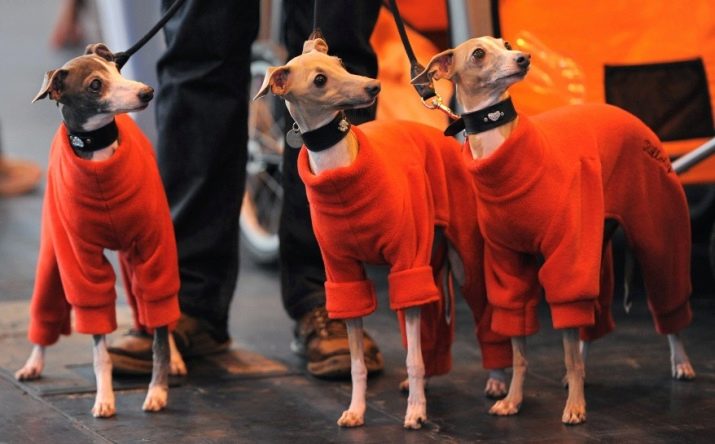
Character Features
Describing the character features of the Italian greyhounds, all dog handlers and breeders note their similarity with the larger representatives of this group of hunting dogs. Despite the external fragility, animals are hyperactive, prefer to express their emotions as intelligibly as possible, can be fearless. Italian greyhound comes into a state of nervous excitement instantly - at the sight of a favorite toy or host who has returned from work.
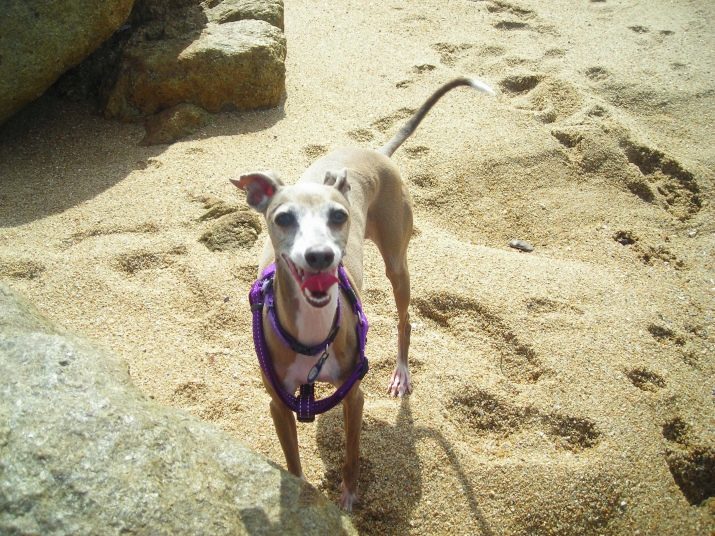
With such a dog, the owner has virtually no chance of being alone.
Do not succumb to the charm of the aristocratic appearance of the pet. Italian greyhounds, like any other Greyhounds, born hunters, dogs that can create chaos almost out of the blue. Attention of the owner, they also require active - not just hugs or stroking, but the game. Representatives of the breed retain such character traits until old age.

Hyperactivity
Italian greyhounds, despite their miniature, are quite capable of comparing with large dogs in terms of destruction. Moreover, puppy pranks (due to late maturity) last for up to 1.5-2 years. During this period of time, you can expect such troubles as chewed furniture, bags, shoes and clothes, tattered wallpaper on the walls, eaten wires. The maintenance of two dogs at once helps to reduce hyperactivity in relation to home decoration - busy playing with each other, they will not spoil the situation in the house. Another option is to provide the animal with a sufficient amount of physical activity.
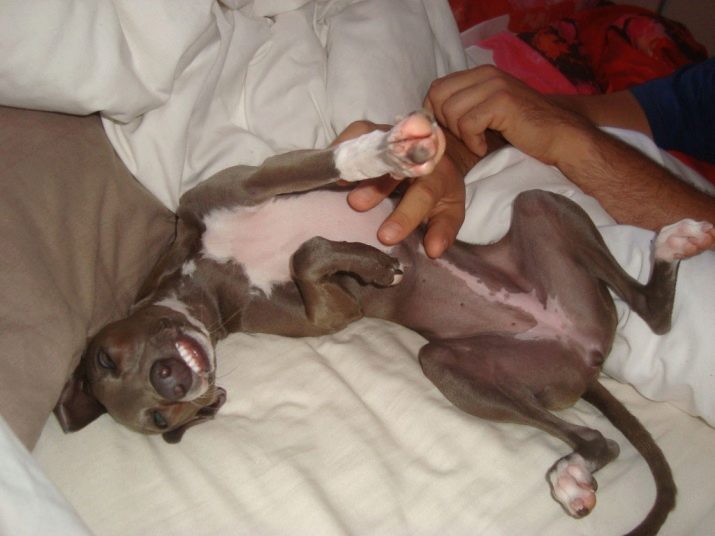
Sociability
In terms of sociability, Italian greyhound has virtually no competitors. This miniature dog easily finds friends, gets along well with cats, as well as its small and medium sized brothers. For a child of primary and secondary school age, Italian greyhound can become a faithful companion, partners in games and entertainment. The breed is not aggressive towards children, gets along well with them, and its willingness to show love can warm the heart of an older person.
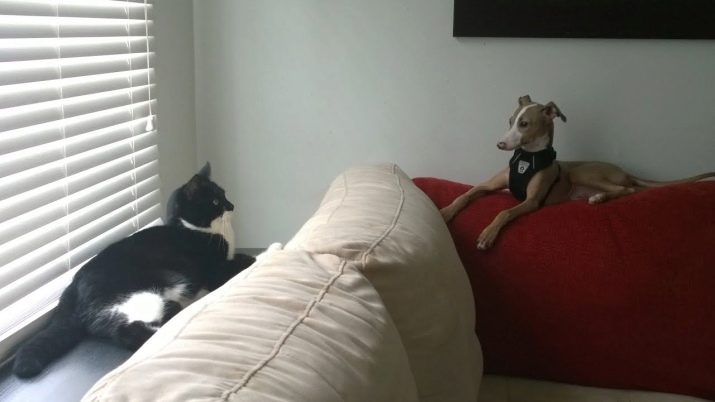
Despite the general sociability, the dormant instincts in the Italian greyhound do not allow her to coexist calmly with feathered pets and rodents. Their dog will always try to catch up and bring to the owner as a trophy. Moreover, the rule applies not only to rats and mice.
Greyhounds were raised for hunting hares, so larger rodents are also on their list of interests.
Key Behavioral Characteristics
According to their habits, Italian greyhounds are surprisingly similar to domestic cats. For relaxation, they choose observation points on a hill, try to stay close to heat sources. Chairs, armchairs, bedside tables, window sills - this is where you will have to place the bed selected for the pet. In severe cold, the dog will completely prefer the owner’s company, climbing under the covers.

During the walk, Italian greyhound pedanticly goes around puddles and mud, it will prefer to stay at home and to relieve the natural needs of the tray in heavy slush or rain.
During your stay on the street, you should carefully monitor the pet, if possible, do not let it off the leash. The hunter's good eyesight and instinct often plays a trick on these dogs, forcing them to pursue their prey, despite the owner's protests. It is worthwhile to prepare in advance for emotional communication with the pet. Voiced barking, screeching are a natural manifestation of the feelings of a small dog.
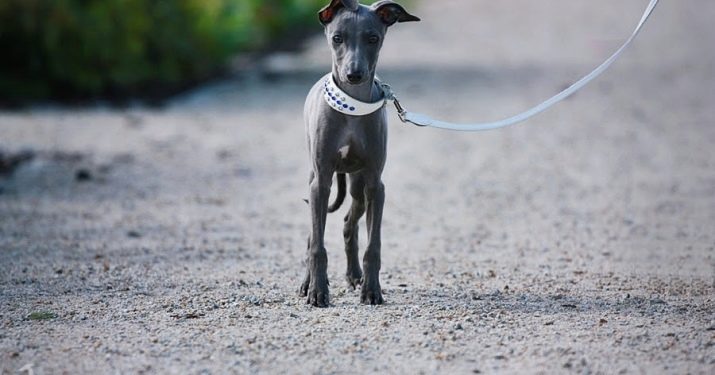
Leadership is an unexpected character trait of Italian greyhound. But the Italian greyhounds are really great commanders. Suffice it to say that if there are several dogs in the house, the leader of this flock over time will be a miniature greyhound, and not at all the larger and stronger members of the team. Italian greyhound also twists ropes from the owner, easily achieving what he wants.
But with the right approach to training, this moment will not cause any particular inconvenience.
Conditions for keeping
What conditions are required for Italian greyhound? There are a lot of cat habits in her behavior, accordingly, when preparing the house for the appearance of a puppy, it is worth considering the breed's needs for comfort. If you do not create the proper conditions, the animal will choose its place in the house exclusively as a space under its owner’s side, under a blanket, and will not give it to anyone.
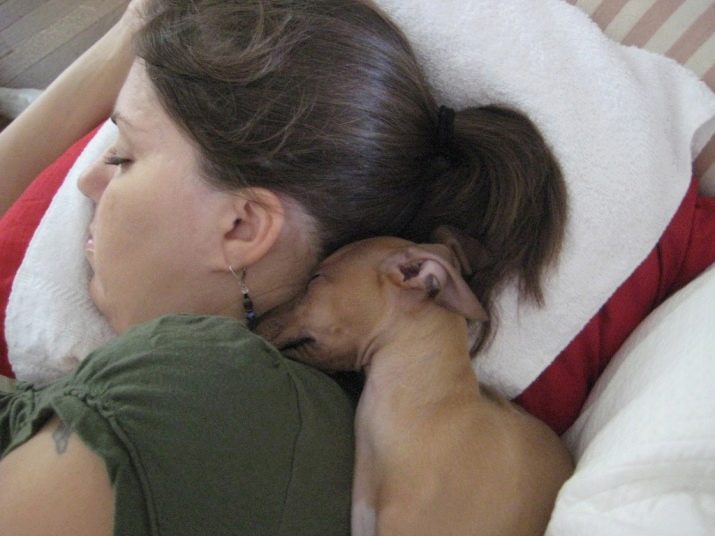
For relaxation, you should give your greyhound own apartments - a house with a soft pillow, a spacious basket with high sides. Dogs love to watch the street from the window. It is worth highlighting the pet's personal windowsill or arranging a review from a sufficient height. In addition, you need to take care of the inaccessibility for an extremely curious puppy or adult dog of any dangerous objects.
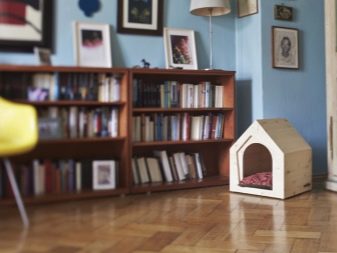

Wires, poorly closing cabinet doors, low-standing appliances - all this should be removed.
In fact, a lively and active Italian greyhound is a small child in the house who will definitely try something that can’t just be scattered. And to relate to this side of the animal's life you need to philosophically. It will not be possible to change the breed’s habits - you will have to take safety measures (many methods and devices can just be taken from the experience of protecting property from children).
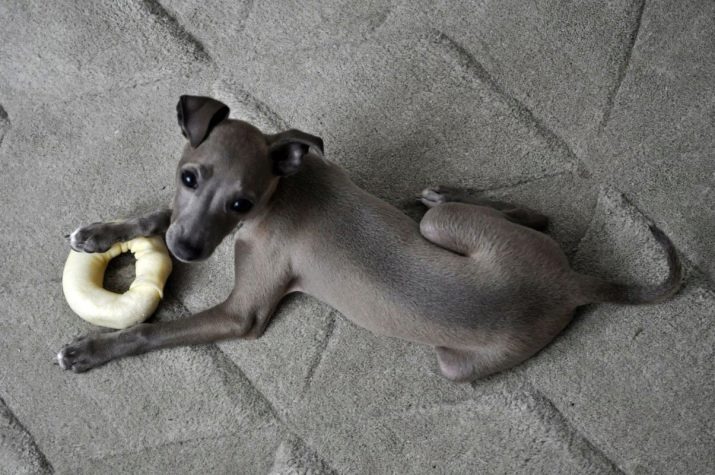
Games and toys are things without which Italian greyhound cannot exist. She definitely needs to provide a sufficient number of silicone balls, tweeters, stuffed animals. It is worth periodically updating the stock available for the dog entertainment.
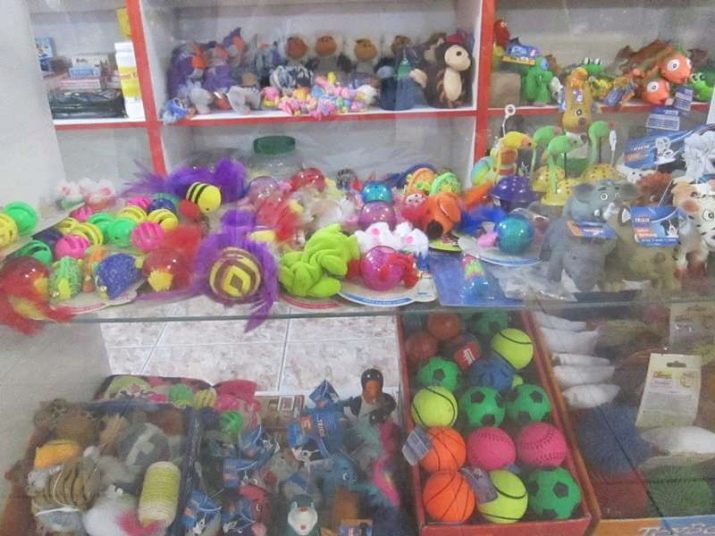
Compliance with the rules of hygiene is not a horse of the breed at all. Italian greyhounds, even in adulthood, can leave puddles on the floor, forget about the need to visit the tray. The best solution for a miniature greyhound will be daily walks during which the dog will be able to cope with natural needs.

What to feed?
Catering for Italian Greyhound implies a balanced, complete diet with a predominance of animal protein. Its source can serve as ready-made feed - dry or in canned form, as well as natural meat. The best choice would be beef tenderloin. Moreover, miniature greyhounds prefer to eat slightly spoiled meat, with films and veins, in raw form.

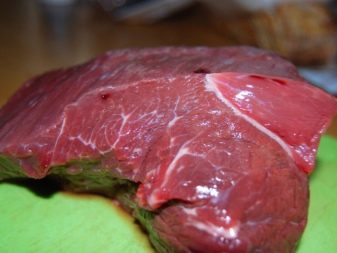
If there is a danger of helminthic invasion, you can heat the food, but it is the unboiled option that is best absorbed.
Digestion features of Italian greyhound are such that it best tolerates meat nutrition. Digestion of a rotten piece is easier than fresh. Small cuts are also not needed. Broth feed the dog is also not worth it.
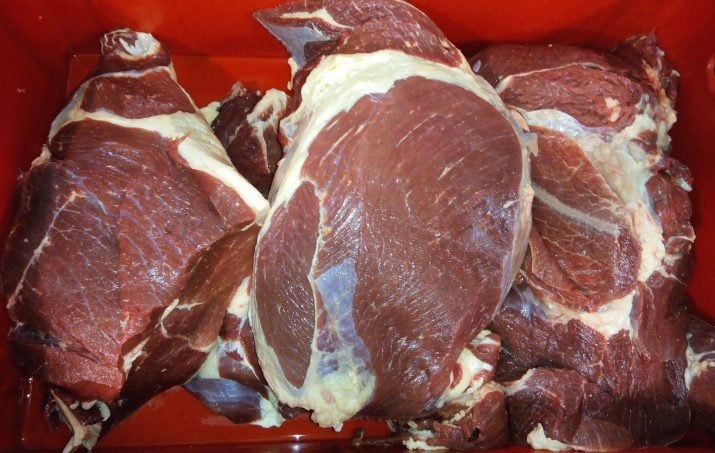
For a change, low-fat ocean fish - boneless fillet - is added to the diet. It is permissible to use fermented milk products - cottage cheese, yogurt, yogurt in low fat form. The share of cereals in the diet is not more than 30-40%, they are given separately from meat, so as not to disturb the digestion process. Vegetables and fruits are given between main meals. Legumes are strictly prohibited.
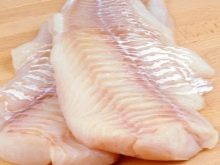
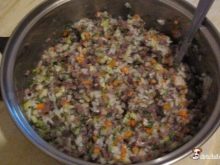

When using a natural diet, you must give your pet vitamin and mineral supplements. A veterinarian will help pick them up. Prevention should be systematic, with the adjustment of the composition of vitamins taking into account the season.
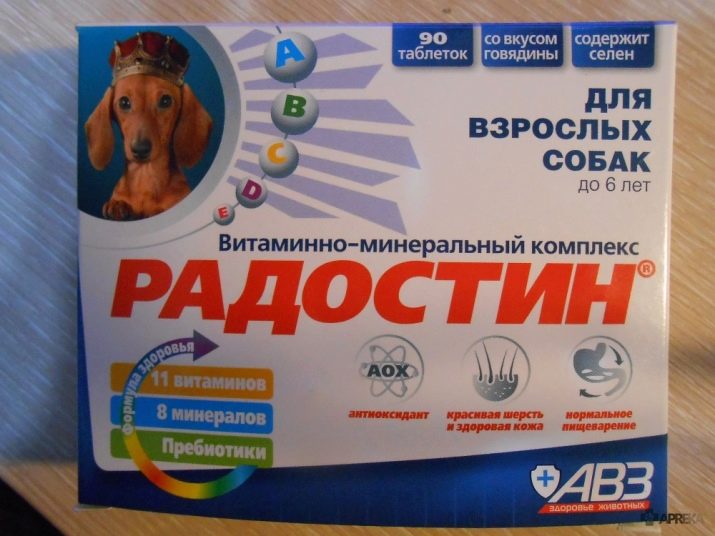
How to care?
Italian greyhound is a breed that is not very demanding in care. The dog practically does not shed, the absence of an undercoat eliminates the appearance of an unpleasant odor. It is periodically recommended to bathe the animal with special products for smooth-haired breeds or to remove contaminants with hypoallergenic wipes. Paws are washed after each walk, it is worth accustoming the pet to this procedure as soon as possible.

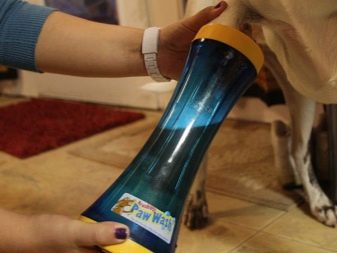
Often you do not need to clean the greyhound ears. They need to be regularly inspected, when accumulating contaminants, release from sulfur and plaque with a soft cloth, a special lotion. Eyes also do not require intensive monitoring.


It is sufficient to periodically pay attention to their hygiene, and, if necessary, clean with a cotton pad.
A regular procedure should be dental care. They are cleaned at least three times a week, with special veterinary pastes. Tartar is removed from the doctor. Claw trimming is only necessary in winter. In the summer, the dog grinds them on their own.
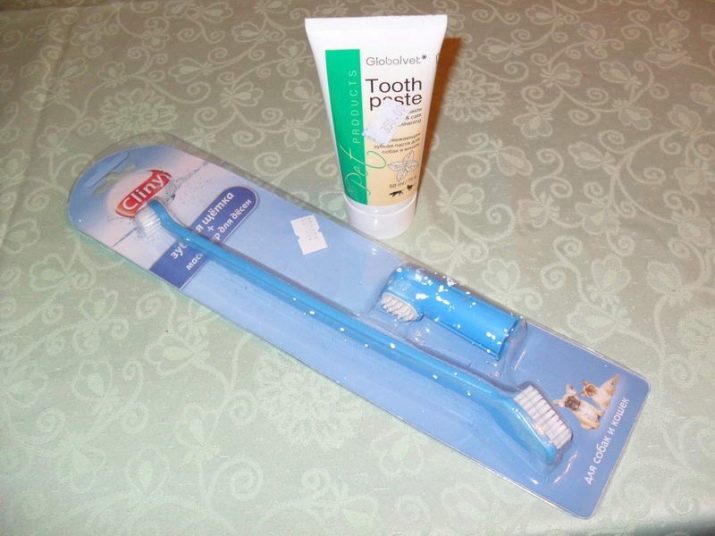
Italian greyhound is an active breed. She needs a walk 2-3 times a day, with a mandatory length of one of the exercises at least 2 hours. In wet, windy weather, the pet will prefer the tray, it is worthwhile to install it, train the dog to use it.
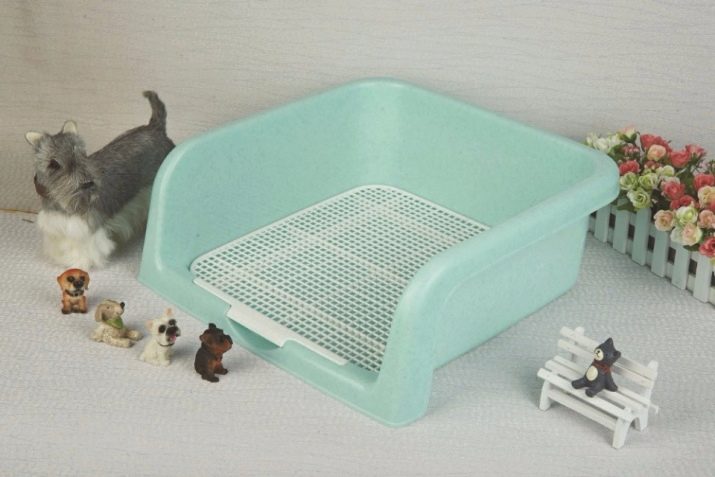
How to choose clothes?
Tips for choosing clothing for owners of Italian greyhound puppies are usually given by more breeders. What is better to consider before sending the baby outside in the cold? Recommendations of experienced dog breeders are as follows:
- You can switch to a winter wardrobe after reaching an average daily temperature of +5 degrees;
- any clothes for an active mini-greyhound should be comfortable, not restricting movement, it is better to choose hypoallergenic materials;
- the first "autumn" clothes - a knitted blanket sweater that covers the neck, chest and back of the pet, it can also be worn at home or under a winter jumpsuit;
- for males, wardrobe items should have a special cutout on their stomach. It is worth choosing things that lend themselves well to washing, have a removable kit in case one gets dirty;
- blanket with a hood is another indispensable accessory, they are easier to put on than full overalls, the dog's paws remain open, but at the same time a good barrier is created to protect from cold weather;
- hats are an important component of Italian greyhound wardrobe, delicate ears need warming, protection against frostbite.
- jumpsuit can be knitted (under a blanket) or full, very warm, with tight-fitting cuffs.

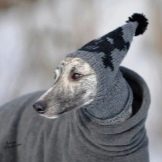

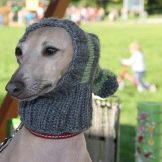
Parenting and training
Education plays a very important role in taming the tyrannical nature of the pet. The lack of zeal in study, the Italian greyhound easily compensates for the tenacity of the mind, easily guided by the mood of the owner. To train her in the classical sense of the word is unlikely to succeed.
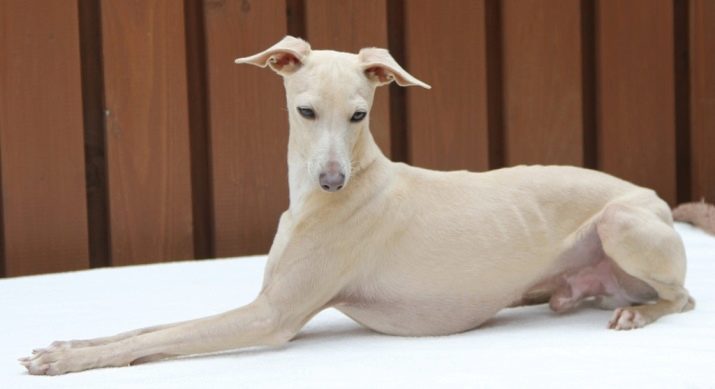
But you can instill in your pet rules of conduct that allow you to comfortably coexist with him in the same space.
It is worth starting the training from the first days of the puppy's stay in the house. He must learn the location of the couch, toilet, bowls. In no case should you allow Italian greyhound food from the master's table. Whatever miserable appearance the puppy takes, it is better to send him to the place at the time of eating people.
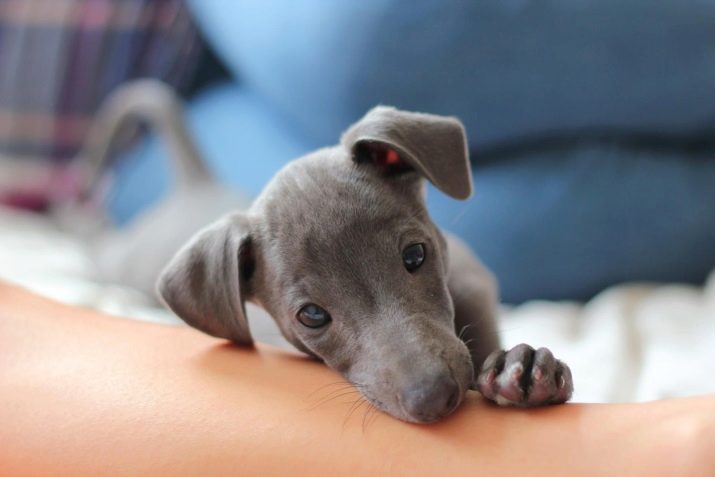
No need to hope for early success in training. Natural obstinacy leads to the fact that Italian greyhound, even understanding the command, is in no hurry to carry it out. Even a delicacy will not help - you will have to agree with the pet on all points, from visiting the tray to mastering the owner's orders. But if mutual understanding is reached, Italian greyhound may well prove to be an ideal pet and a true friend.

Training
It is important to consider that, like other greyhounds, with due persistence, the Italian Greyhound quite successfully masters the general training course and can even be used in sports. They are successfully used in coursing - the pursuit of a mechanical hare, agility, and other types of vigorous activity.

The presence of the goal to be achieved turns Italian Greyhound into those who they were originally - fast hunters who are able to drive the game on their own.
What commands should a dog learn without fail? There are seven of them, and each is aimed at protecting the animal from possible danger.
- To me. Knowledge of this team must be absolute. Otherwise, to catch a dog on a walk, lowering it from a leash, will take a long time.
- Fu / not. The prohibition commands allow you to protect your pet from poisoning, falling, contact with other sources of danger.
- Sit. This skill will help to quickly calm down an overly excitable pet.
- Stand. Another useful version of the command, allowing you to suppress potentially unwanted actions of the animal.
- Forward. For sporting dogs, this command is the trigger for starting a run.
- Nearby. If you want to walk with your pet without a leash, knowledge of this team will be a prerequisite for obedience.
- Take a walk. This team will be appreciated by freedom-loving dogs such as Italian greyhounds. The main thing is that then the pet does not ignore the other requirements of the owner.
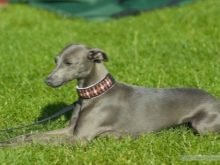
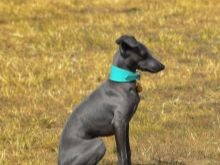
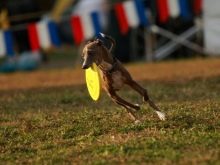
In the process of training, mainly methods of encouragement and restriction are used. With Italian greyhound, do not use coercion - force the dog to act in the way the owner needs. Better to act thinner and train differently. This breed has a highly developed desire to participate in the life of the owner. Ignoring the animal as a punishment is quite capable of becoming a good incentive to educate the dog in the right skills.
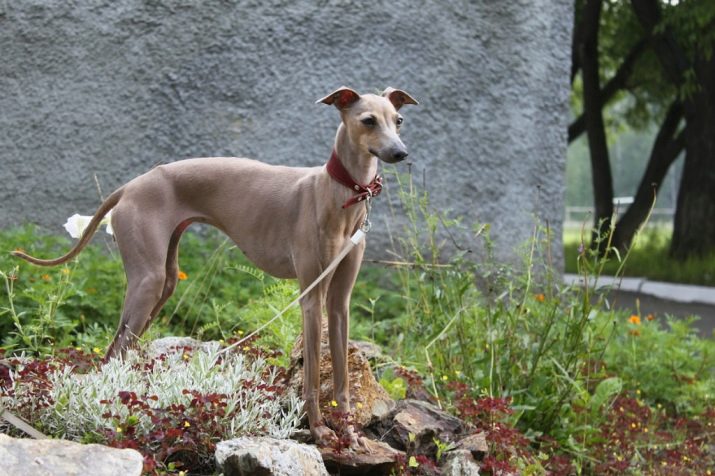
All about this breed of dogs in the next video.
